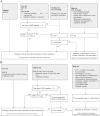S100B, Actor and Biomarker of Mild Traumatic Brain Injury
- PMID: 37047574
- PMCID: PMC10095287
- DOI: 10.3390/ijms24076602
S100B, Actor and Biomarker of Mild Traumatic Brain Injury
Abstract
Mild traumatic brain injury (mTBI) accounts for approximately 80% of all TBI cases and is a growing source of morbidity and mortality worldwide. To improve the management of children and adults with mTBI, a series of candidate biomarkers have been investigated in recent years. In this context, the measurement of blood biomarkers in the acute phase after a traumatic event helps reduce unnecessary CT scans and hospitalizations. In athletes, improved management of sports-related concussions is also sought to ensure athletes' safety. S100B protein has emerged as the most widely studied and used biomarker for clinical decision making in patients with mTBI. In addition to its use as a diagnostic biomarker, S100B plays an active role in the molecular pathogenic processes accompanying acute brain injury. This review describes S100B protein as a diagnostic tool as well as a potential therapeutic target in patients with mTBI.
Keywords: S100B; actor; biomarker; concussion; traumatic brain injury.
Conflict of interest statement
The authors declare no conflict of interest.
Figures
References
-
- Harmon K.G., A Drezner J., Gammons M., Guskiewicz K.M., Halstead M., A Herring S., Kutcher J.S., Pana A., Putukian M., O Roberts W. American Medical Society for Sports Medicine position statement: Concussion in sport. Br. J. Sports Med. 2013;47:15–26. doi: 10.1136/bjsports-2012-091941. - DOI - PubMed
Publication types
MeSH terms
Substances
LinkOut - more resources
Full Text Sources
Other Literature Sources
Medical
Miscellaneous



